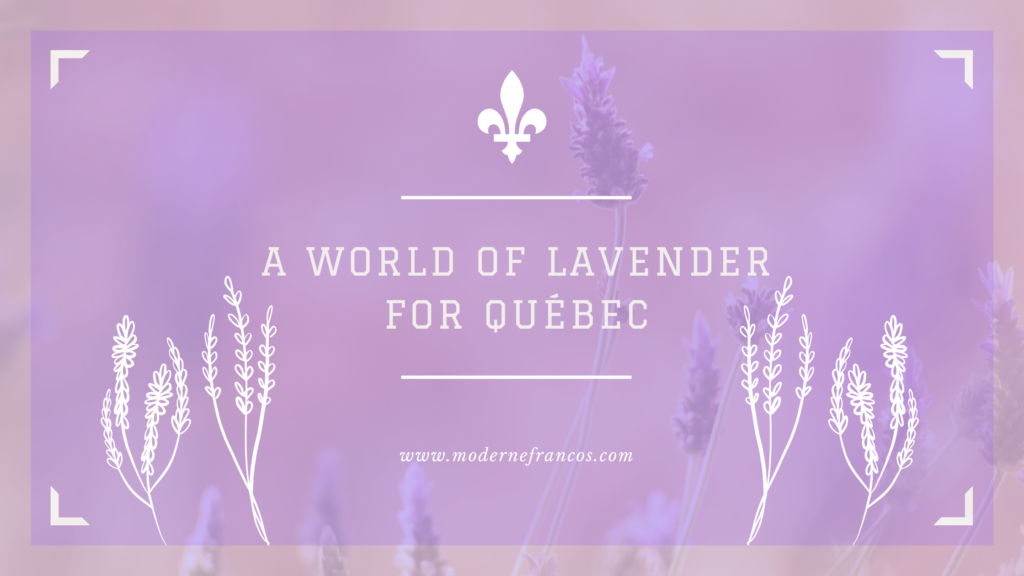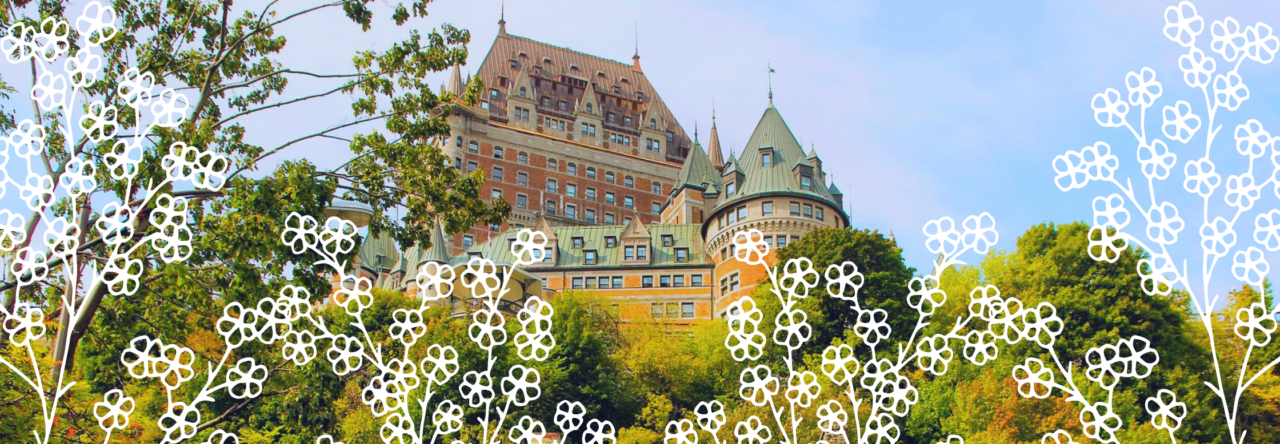
When it comes to lush fields of lavender, we often think of the vast purple pastures of southern France. The region of Provence is specifically where lavender fields call home and where the herb was introduced to France around 600 BC through trading.
The region provided the perfect climate for the herbal plant to thrive and become a recognizable visual of French culture.
But Provence isn’t the only region with these eye-catching fields. This herb is also found in Québec, serving as its own French symbol for the province. Although its history of lavender doesn’t stem as far back as its reign in Provence, it’s become a world of its own in Québec.
A Dream of Lavender in Québec
The tale of lavender planting its roots in Québec began as a story abroad, with one dedicated Quebecker dreaming of bringing the magic of the herb back home. It all began in 1999, when an electrical engineer by the name of Pierre Pellerin traveled to the sun-touched region of Provence.
Basking in the warm climate, Pellerin became entranced with the scent of the lavender all around him. In fact, he became so entranced that upon returning home to the Eastern Townships of Québec, he sold his business and dedicated his life to bringing lavender to his home province.
Despite warnings from agronomists that it could never survive the harsh winters of Québec, Pellerin pushed on. During the next three years, he planted 60,000 crops. Even in 2003, when the winds from a particularly freezing winter demolished 80% of his crop, Pellerin never gave up on his dream of bringing lavender to the fields of Québec. Despite the major setback, Pellerin received advice from local farms and he learned how to protect it against the harsh elements.
By 2004, Pellerin opened his lavender farm, named Bleu Lavande, to the public. He had over 30,000 visitors, much more than anyone expected. By 2006, it was the largest lavender farm throughout Canada with more than 100,000 plants.
Today, Bleu Lavande lives on in the Eastern Townships of Québec where its captivating essence greets hundreds of thousands of visitors every year. Although there are now other lavender farms nearby, Pellerin opened the door for this piece of French culture to thrive in Québec.
Because of his determination and resistance to naysayers, lavender made a home there. The love of this herb has even spread to other parts of Québec, with other farms practicing the creation of lavender-infused products and offering visitors the chance to enjoy the purple fields.
Can We Claim French Symbols for Ourselves?
“We are self-sufficient here in Quebec,” says Louise Brisson, a 25-year-old from Rimouski, as her two friends nod in agreement. “We don’t need to go to France any more.”
France is often lifted up as the standard for French culture while Québec and Franco-America don’t get much of that mainstream spotlight. Although some of that is our responsibility to create a spotlight for ourselves, is it okay to reclaim symbolism rooted in French culture for ourselves?

The fleur-de-lys is an illustrated flower design that has a deep history in France symbolizing royalty, religion, military, as well as being used for decoration. It is seen today as a symbol for all people of French heritage all around the world.
To this day, the fleur-de-lys is used by Québec and France to represent the language and culture of both places even though they are each distinct from one another.
So would claiming lavender as a cultural symbol in Québec be effective in a similar way? As the quote from the article states above, “We don’t need to go to France any more” regarding the access to lavender farms in Québec.
This quote from the young woman, Brisson, asserted that the Bleu Lavande is separate from the lavender of Provence. And perhaps the Québec lavender farm is a piece of that old world culture that can become its own cultural signifier to those of us in the new world of Québecois, French-Canadian, and Franco-American culture.
With Pellerin bringing lavender to the land that was called New France, it can act as a stepping stone for curious Franco-Americans to choose a visit to Québec’s fields over Provence. Along the way, more distinct cultural aspects of Québec can be discovered and become a source of inspiration like the traditional dress and folk costume of the province.
Lavender As a Statement
It may only be an herbal plant, but lavender brought a piece of cultural freedom to Québec as a form of separation from the dependence on France to experience lovely fields of lavender firsthand.
From my current apartment in New Hampshire, Bleu Lavande is three hours away by car. A flight to the Provence region in France would be a 16-hour flight. This was the inspiration for Pellerin’s lavender dream, to open access to those of us who are interested in experiencing the fragrant fields on our own side of the world.
“I enable people to live a dream — seeing lavender fields without going to Provence.”
Notice how Pellerin didn’t say that he’s bringing Provence to Québec, but that the lavender fields can exist in Québec without Provence. If we can share the fleur-de-lys with France, is it possible to make lavender another shared symbol of two distinct French cultures?
Bleu Lavande was founded from the ground up by the hard work and dedication of Pellerin to share the magic that he saw in lavender with his fellow Quebeckers. He was told again and again that it would never survive in the province. But he never gave up on giving his home its own lavender fields, where they remain to this day.

Leave a Reply